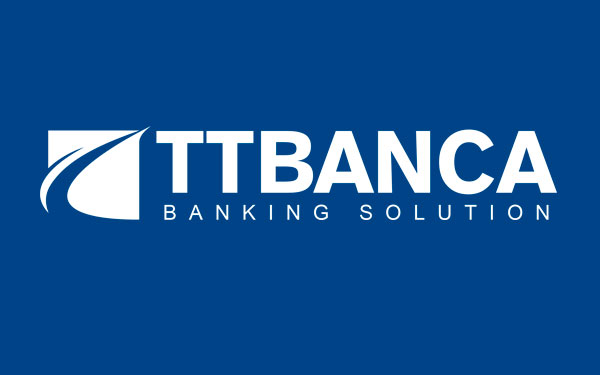Services
A team of experts to meet your needs
Financial Management and Management Control
Financial Management and Management Control
Every day, companies manage their financial control processes manually (spreadsheets) with high operational risks and consolidating information from many data sources to then generate several types of reports in a complex manner.
If you want to manage your financial resources safely, consistently and timely in order to add value to your partners/shareholders, you can count on us.
These are some of the advantages of using our services: On time, safe and quality management reports (both static and dynamic); simple budget expenditure updates; 100% error free, real and forecast budget comparisons; accurate acquisition (invoices) and vendor payment controls; indicators; change reports; correct data loading; clearance workflow; and clear and simple bank conciliation.
We can supplement your existing ERP and/or Business Intelligence system.
We are backed up by 15 years of experience in IT corporate solutions with a focus on applied technology for banks and financial areas.
Contact us for more information about this service.
Custom-Built Software Development
Custom-built software solution to suit your specific needs, either to obtain a competitive advantage, to support part of a process or when markets lack a standard solution. Adequate cost, speed and service capability.

Business Intelligence
Business Intelligence (BI) techniques aim at closing the gap between data and information. What makes a difference is the organization’s ability to comprehend reality based on the data it collects from its operations, which can easily amount to millions of registers depending on industry and business size. To draw conclusions from such huge amounts of data, we have a two-stage process focused on supplementary tasks:
- Provide easy access to data reading and revision; and
- Help decision-makers identify data patterns.

Ease of Access
Standard information systems are usually designed to handle “transactions”, i.e., they register individual events of a certain process. For instance, a bank registers each deposit and draft, among others, for individual accounts. For this reason, searching through each of these transactions is particularly quick since current database engines allow optimized searches based on several parameters and ancillary structures, such as indexes.
But what happens if we want to find out the accumulated outcomes in a dimension and compare them with others? Let’s assume we want to compare all the deposits made in the bank during November, grouped by region, and then with a national total, with those of last year. In the database engine queries this would mean selecting all the registers corresponding to the chosen periods, grouped by region and date, to then add the field that stores the deposit in each register for every category.
While the database engine can be particularly efficient and the hardware it runs on very fast, for a particularly large amount of data this query can still fail to meet the speed requirements of an analyst or decision-maker in an interactive experience. Not to mention the fact that each query is working on the organization’s production systems.
To solve this issue we can begin by considering that the data we want to analyze, like in the example, are often historical data; this means that since they belong to past transactions, they will remain unchanged. Hence, we can copy such data from the production relational database to an optimized database specifically designed for the analysis (unstandardized). This special database is often known as a Data Warehouse or DataMart, depending on whether it stores all the organization’s data or only part of its process.
On this DataMart we build an additional structure which is finally queried for the analysis, known as an OLAP (Online Analytical Processing) cube. The name “cube” derives from the multi-dimensional structure that shapes the context under analysis, which can often be time, geographical range, products, etc. Each dimension can have multiple levels, like in the case of the geographical range, which can encompass country-region-commune. This cube stores historical data with accumulated calculations for the aggregations according to the type of analysis involved. Therefore, not all registers need to be reviewed and added when making the query since the addition has already been made. Every dimension crossing can have several optimally calculated members, as described, or with more complex formulas that take into account their position in the cube, the dimensions involved and others.
Queries over the OLAP cube can use the same interface on which it was built or be integrated with Excel to make them look like dynamic tables. OLAP engine APIs can also be used to build web or desk applications that generate queries, occasionally in a simpler manner by establishing a clear and graphic means of dragging dimensions and alternatively reducing freedom of use based on the user.
At Miró, we have vast experience in OLAP cube building and maintenance for the financial industry and supermarkets, among others. The challenges we have faced usually involve handling large amounts of data (such as in the supermarket industry where all transactions are stored) and the construction of OLAP cubes derived from others. For instance in the financial area, the exchange rate is built in an ancillary cube, which is then matched with the cube with data in local currency to create a third cube with data in US dollars. All these cubes are built using Microsoft Analysis Services, part of the SQL Server Suite, in multiple versions.
Pattern Identification
OLAP cubes are a very efficient data analysis method. Up to this point, the analyst is responsible for knowing what the data are telling. To support analysts in this task, an additional concept is introduced: Data Mining.
Let’s use a supermarket as an example. Each purchase is registered in its ERP or sales system, including the product’s detail, time of purchase and the client who made the purchase (as a result of customer loyalty programs). With this type of register, huge amount of inputs can be stored in a relational database, allowing efficient queries for specific purchases. However, this does not show interactions among different dimensions of the context under analysis.
Data Mining technologies look for these types of interactions among the context’s different dimensions, besides helping identify other relations unpredicted by analysts. With such a support tool, analysts can pay attention to these interrelations and decide whether they are relevant for the analysis or not.
Several approaches and outcomes can emerge from this data analysis. In some cases, different registers can be grouped according to one of the attributes that makes them up so as identify the larger groups into which the data set can be classified.
A second approach aims at developing a structure to predict the value of a parameter based on the others. A typical example is decision trees which are built based on data introduced for a system to “learn”. The idea is for this structure to become a white box where we can subsequently introduce more registers and obtain a predicted value.
Working on these algorithms considers several techniques focused on preventing the emergence of models that fail to give a correct account of the context where work is being carried out. For instance, the model obtained should not match the learning dataset too closely as this would prevent it from predicting data from other sets. Among other things, this requires splitting the complete dataset up into a learning set and a testing set, and further adjusting the model based on its predictive outcomes.
Common tools used for this analysis are: Microsoft SQL Server Analysis Services and Open Source Weka.
Expert Consultancy

We support your business in tasks that require expert knowledge based on the experience gathered since our very beginning.
We handle complex technical and management topics and keep pace with technology innovations. We offer project management skills that guarantee that both project deadlines and requirements are met, in addition to keeping orderly and accessible information about related devices.
We have built excellent diagnostic capacities and due to our knowledge of multiple platforms (kept by the company), we can find solutions quicker.
The main advantage of this type of service is that Miró works on site and is particularly focused on the client’s requirements, helping companies resume existing businesses in the shortest time possible. For such purpose, we focus our efforts on understanding your business as much as possible, in addition to conducting a situation analysis, so that we can look for the best solution and implement it.

